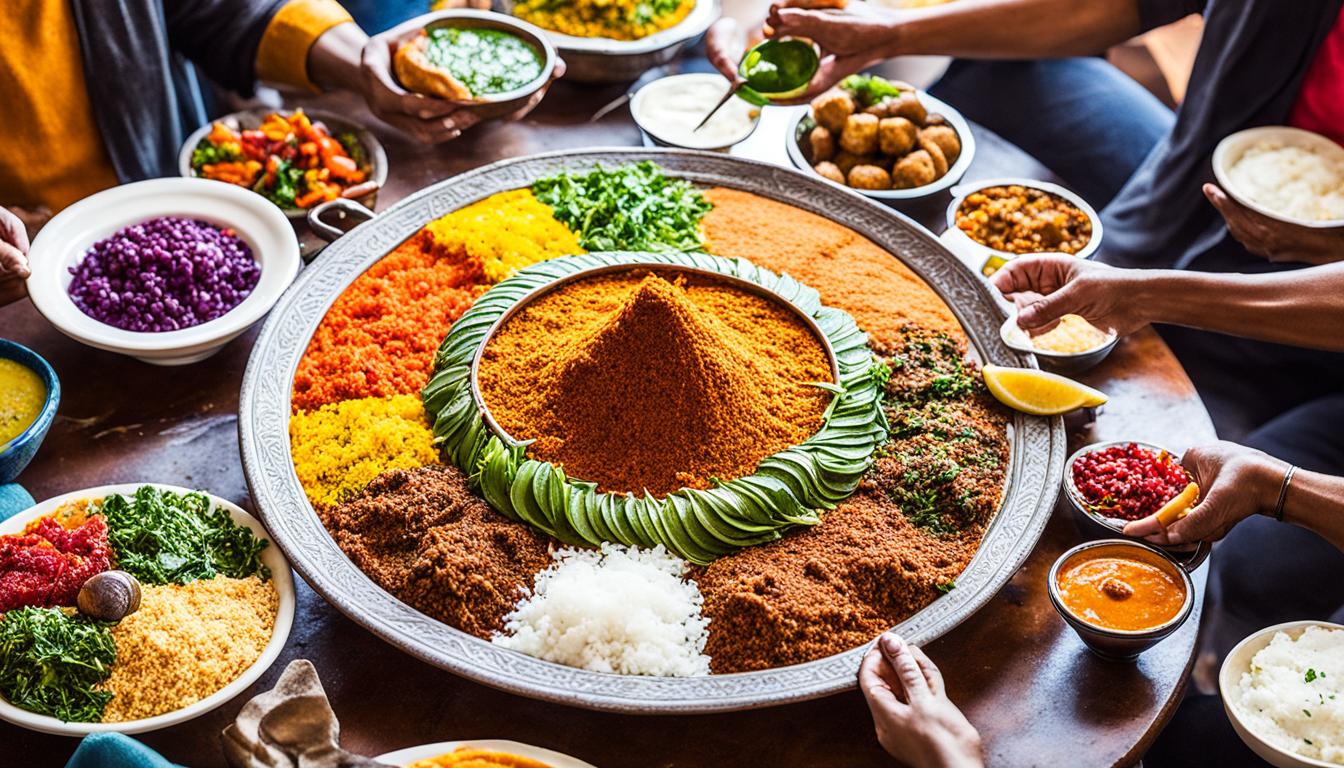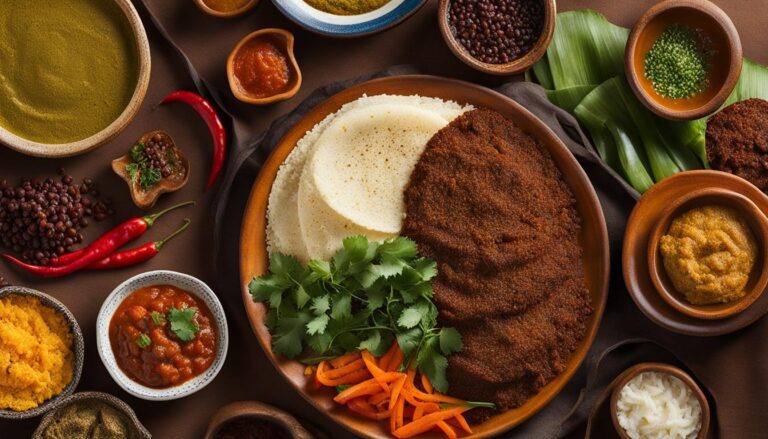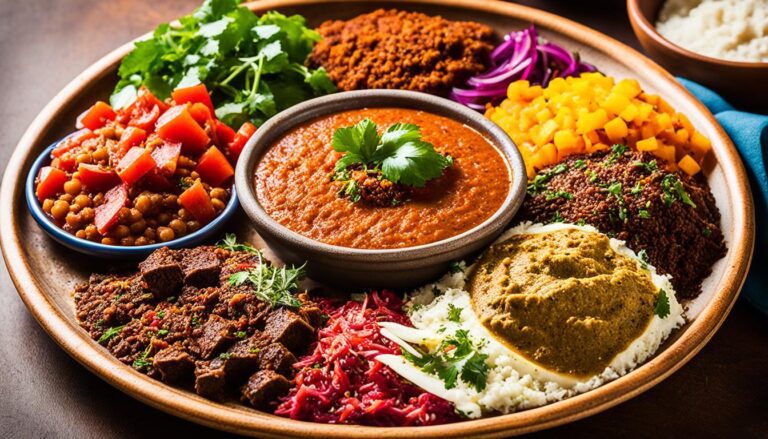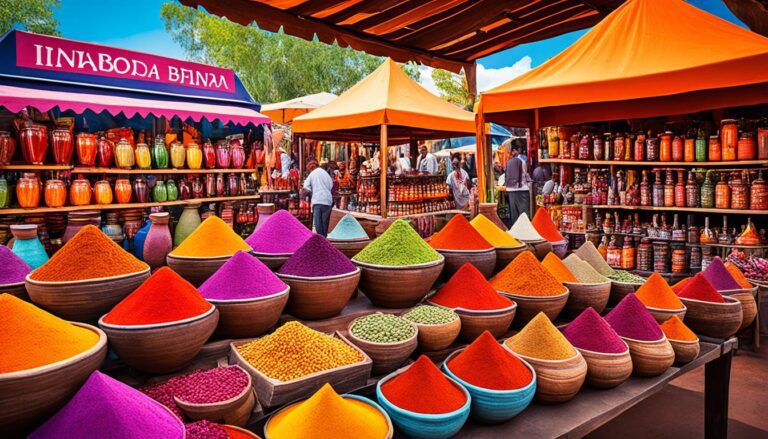What Are Ethiopian Foods?
Welcome to a gastronomic journey through the diverse and captivating world of Ethiopian cuisine. Prepare to indulge in a rich array of flavors, spices, and cultural influences that make Ethiopian foods truly unique. From aromatic stews to vibrant street snacks, Ethiopian culinary traditions are sure to ignite your taste buds and leave a lasting impression.
But have you ever wondered what makes Ethiopian dishes so special? What ingredients are used to create their distinct taste? And what regional specialties can you expect to find across this culturally diverse country? Join us as we uncover the secrets of Ethiopian cuisine and discover the wonders that await.
Key Takeaways:
- Explore the rich and diverse flavors of Ethiopian cuisine.
- Discover the key ingredients and spices that give Ethiopian dishes their distinct taste.
- Uncover the delights of Ethiopian street food and popular snacks.
- Learn about the unique regional specialties found across Ethiopia.
- Appreciate the cultural heritage and traditions embedded in Ethiopian foods.
Ethiopian Spices and Ingredients
Ethiopian foods are renowned for their distinctive and flavorful spices. When it comes to Ethiopian cuisine, spices play a vital role in creating the rich and aromatic flavors that make these dishes so unique. Let’s delve into the key spices and ingredients that are commonly used in Ethiopian cooking.
Berbere: The Fiery Spice Blend
One of the most iconic and essential Ethiopian spices is berbere. This fiery spice blend is a blend of various herbs and spices, including chili peppers, garlic, ginger, fenugreek, and more. It adds a vibrant heat and depth of flavor to dishes like doro wat (spicy chicken stew) and lentil stews.
Niter Kibbeh: The Spiced Clarified Butter
Another traditional ingredient in Ethiopian cuisine is niter kibbeh, a spiced clarified butter. Made by simmering butter with spices like cardamom, cinnamon, and cloves, niter kibbeh adds a rich and aromatic flavor to dishes. It is commonly used in sautéing vegetables, marinating meats, and even as a condiment for injera, the famous Ethiopian flatbread.
Other Traditional Ingredients
In addition to berbere and niter kibbeh, there are many other traditional ingredients that contribute to the unique flavors of Ethiopian dishes. These include fenugreek, cumin, turmeric, ginger, garlic, and various fresh herbs like basil and thyme. Each ingredient adds its own distinct aroma and taste, resulting in a vibrant and complex flavor profile.
By combining these Ethiopian spices and traditional ingredients, Ethiopian cuisine offers a tantalizing sensory experience that is sure to delight your taste buds. Let’s continue exploring the rich culinary heritage of Ethiopia and uncover the delightful world of Ethiopian street foods.
Ethiopian Street Foods
Ethiopian street foods offer a vibrant and enticing culinary experience. As we explore the lively streets of Ethiopia, we are captivated by the aroma of spices, the sizzle of grills, and the colorful displays of mouthwatering snacks. From bustling markets to street food stalls, Ethiopia has a rich street food culture that delights locals and tourists alike.
One popular snack you’ll often encounter is the samosa. These triangular pastries are filled with a savory mixture of vegetables, meat, and spices. The crispy pastry shell gives way to a burst of flavors, making it a perfect on-the-go snack. Whether you prefer a vegetarian or meat-filled samosa, the combination of spices and fillings will surely satisfy your taste buds.

Another beloved street food snack in Ethiopia is kolo. This delectable treat is made by roasting grains such as barley or corn kernels until they are crispy and fragrant. Kolo comes in different variations, including salted or spiced options. It is a delightful snack to munch on while exploring the vibrant streets of Ethiopia, and its crunchy texture and unique flavors make it an irresistible choice.
When it comes to Ethiopian street food, the options are endless. From injera wraps filled with savory fillings to doro fit-fit, a flavorful combination of shredded flatbread and spicy chicken stew, you’ll find a diverse range of dishes that showcase the diverse culinary traditions of Ethiopia. With each bite, you’ll embark on a culinary adventure that reveals the true essence of Ethiopian street food.
So, if you’re craving a taste of Ethiopia, head to the bustling streets and explore the vibrant world of Ethiopian street foods. Let your senses guide you as you indulge in popular snacks that reflect the rich flavors and culinary traditions of this East African nation.
Regional Ethiopian Specialties
Ethiopia, with its diverse landscapes and cultural heritage, boasts a culinary landscape as colorful and varied as its surroundings. Each region in Ethiopia has its own unique specialties, showcasing the richness and diversity of Ethiopian cuisine. Join us as we explore the traditional dishes that define the culinary identity of different regions across the country.
1. Oromo Region: Kitfo
In the Oromo region, one of the most famous traditional dishes is kitfo. This delicacy consists of finely minced raw meat seasoned with a blend of Ethiopian spices. Often served with injera, a sourdough flatbread, kitfo offers a unique dining experience for those seeking adventurous flavors.
2. Amhara Region: Tej
Traveling to the Amhara region, we discover tej, a traditional honey wine. This sweet and aromatic beverage is made from fermented honey and is a favorite among locals. Tej is often served in traditional Ethiopian clay barrels called bereles, adding to the cultural experience of enjoying this local specialty.
3. Tigray Region: Azifa
In the Tigray region, azifa is a popular dish that showcases Ethiopia’s love for legumes. This salad is made from cooked lentils mixed with herbs and spices, creating a refreshing and flavorful dish. Azifa is commonly enjoyed as a side dish or a light meal.
4. Southern Nations, Nationalities, and Peoples’ Region: Doro Alicha
Heading to the Southern Nations, Nationalities, and Peoples’ region, we discover doro alicha, a mild chicken stew. Unlike its spicier counterpart doro wat, doro alicha is seasoned with a subtle blend of herbs and spices, offering a different flavor profile. Served with injera or rice, this dish is a staple in the region.
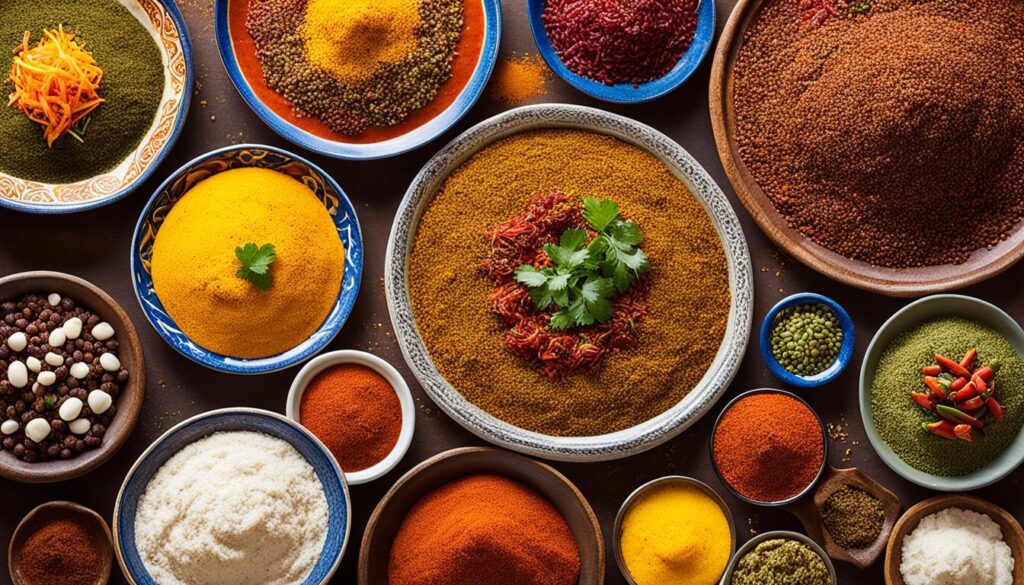
Exploring the regional specialties of Ethiopia allows us to appreciate the unique culinary traditions and flavors that lie within each area. From the raw meat delicacy of kitfo to the honey wine of tej, Ethiopian regional foods offer a truly immersive dining experience. Join us in our culinary journey through Ethiopia as we continue to uncover the treasures of Ethiopian cuisine.
Conclusion
In conclusion, Ethiopian foods offer a captivating blend of flavors, spices, and cultural influences. The culinary diversity of Ethiopia is showcased in dishes such as the iconic injera, a spongy fermented flatbread that serves as the foundation for many Ethiopian meals. It is enjoyed alongside a variety of traditional stews, such as doro wat, a spicy chicken stew, and miser wat, a flavorful lentil stew.
Exploring the unique tastes and ingredients of Ethiopian foods is not only a delightful gastronomic experience but also a way to appreciate the diverse traditions and culture of this East African nation. Each region in Ethiopia has its own specialty dishes, such as the raw meat delicacy kitfo in the Oromo region and the honey wine tej popular in the Amhara region. These regional specialties highlight the rich culinary heritage and cultural diversity that make Ethiopian cuisine truly extraordinary.
Embark on a culinary journey through Ethiopia and discover the wonders of Ethiopian cuisine. From the robust flavors of the spices to the warmth of the traditional dishes, Ethiopian food offers a glimpse into a vibrant and diverse gastronomic landscape. Whether you’re a food enthusiast or simply curious about exploring new flavors, Ethiopian cuisine is sure to delight your taste buds and leave you with a lasting fascination for the culinary traditions of this remarkable country.

